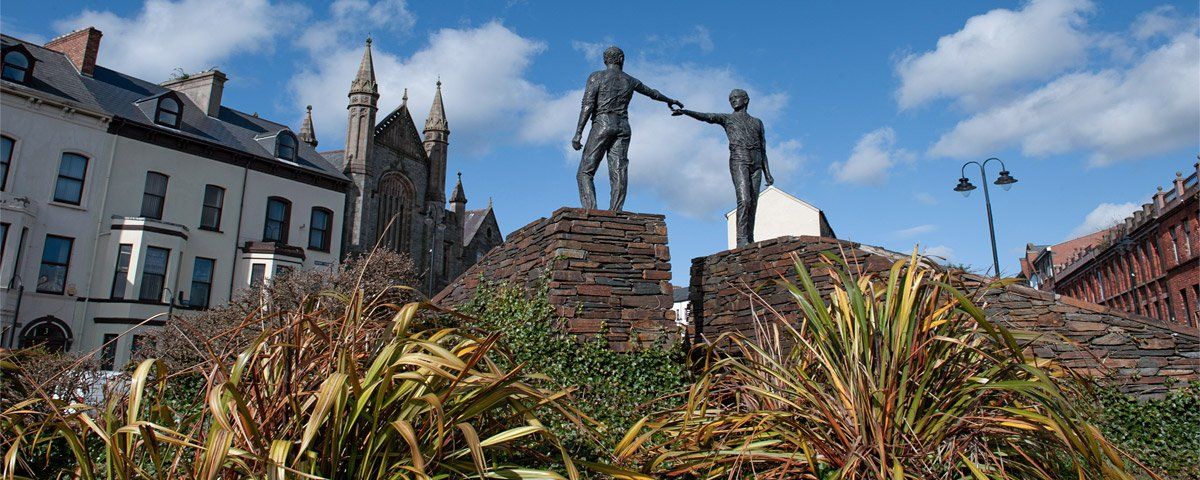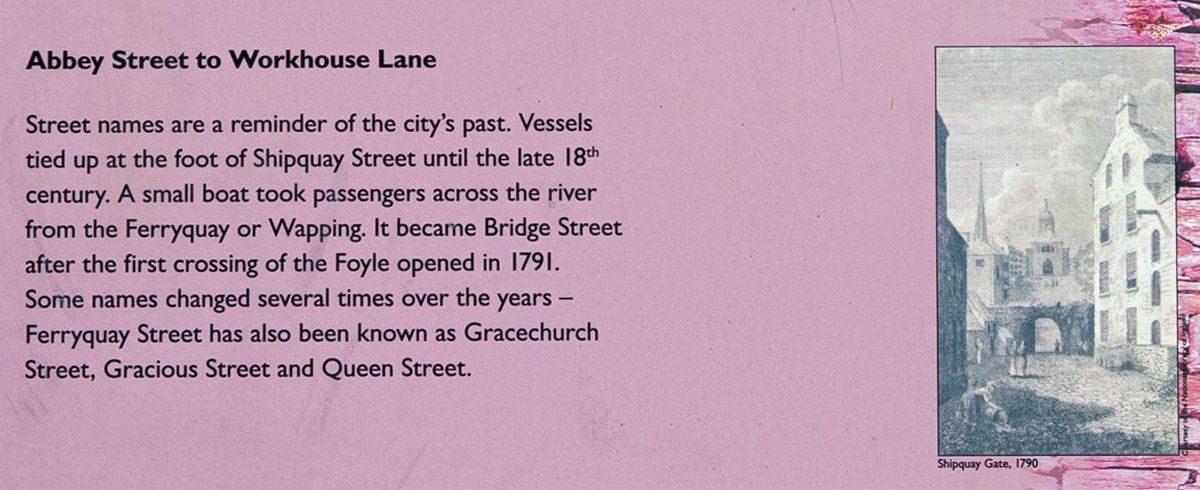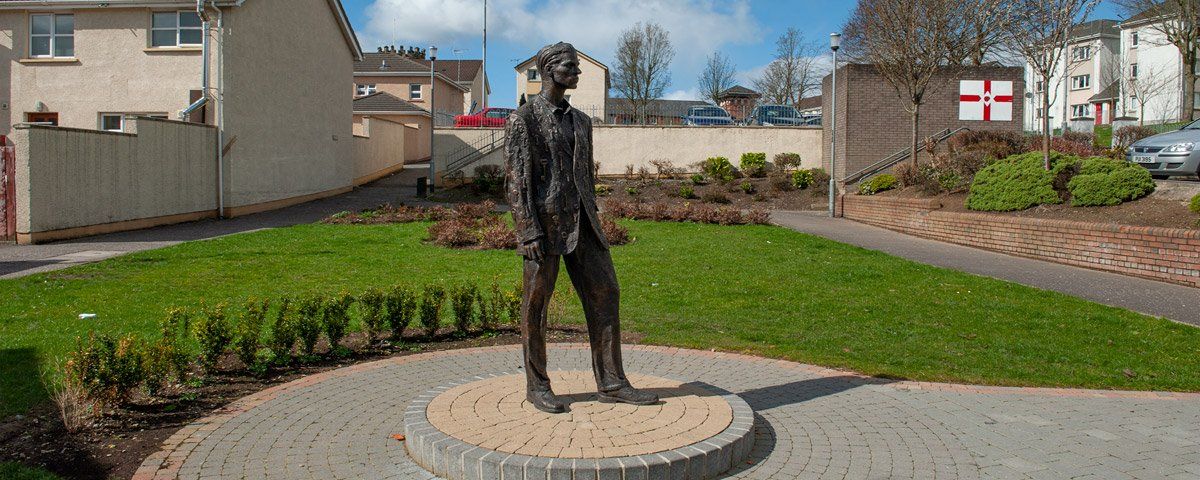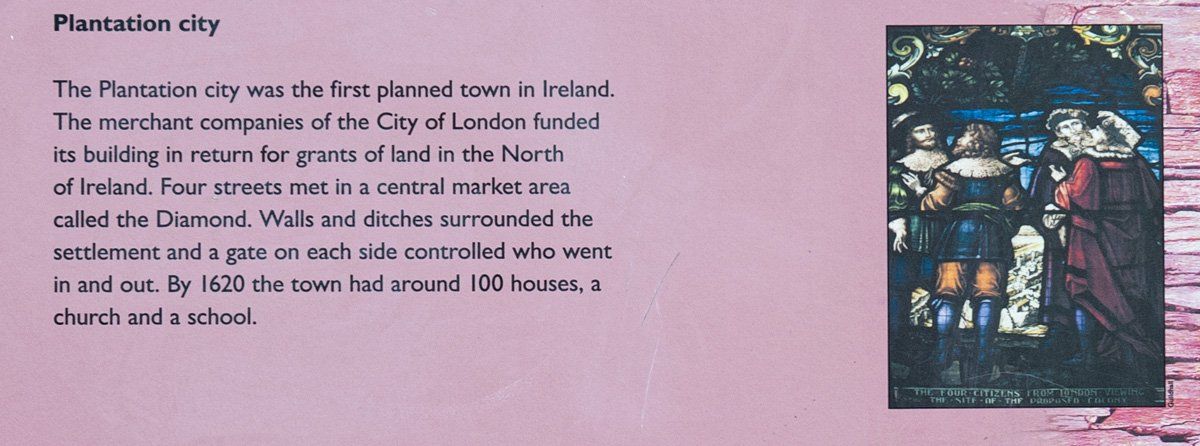History of Derry
The city is very much one of duality in identity from the original name of Daire to the walled plantation city of Londonderry, the name derives from a combination of the two. Some call it Derry and others Londonderry. Derry or Daire means ‘Oak Grove' and can be traced back to AD 75 where it appears in Gaelic as Daire Calgac (Calgach) ‘Oak Grove of Calgac’, the modern standardised Irish spelling is Doire. Calgach was a Pict or Cruthni who became the first king of Albany elected by the druids at Scone in 75 AD. One of the provinces of Albany was ‘Srath Eireann’ or Ireland which was ruled from Tara in County Meath. In the Annals of Ulster, we find Daire referred to as 'Daire Columbkille' after St.Columba who founded a monastic settlement here in 546 AD.
The site of this early monastery eventually evolved into an Augustinian Abbey which was destroyed twice (1059 and 1136), it was then abandoned and replaced by a medieval church. Today the site is occupied by the beautiful gothic styled St Augustines Church, known as the 'Wee Church on the Walls', it was built in 1872 and designed by J. C. Ferguson. The site has an unbroken ecclesiastical history going back to the first settlement here by St. Columba in 546 AD. You can find many traces of earlier human settlement scattered in the landscape around Derry including the Palace of the Sun (Grianan of Aileach) located a couple of miles inside County Donegal and dating to the Iron Age, the time of the Picts or Cruthni.
An account of Daire in 1600 by Sir Henry Docwra is as follows: "A place in the manner of an island, comprehending within it 40 acres of land, whereon were the ruins of an old abbey, a bishop's house, two churches, and at one of the ends of it an old castle; the river called Lough Foyle encompassing it on one side, and a bog most commonly wet and not easily passable, except in two or three places, dividing it from the mainland." Docwra took Derry without opposition and set about building it into a defensive settlement, at this time Queen Elizabeth of England wanted the Foyle and Ballyshannon planted by Royalists to curb rebellion by the Gaelic lords.
Bear in mind that Ireland has never been at peace with itself, clans have fought clans and alliances forged and broken constantly between the Gaels, Scots, English and their offshoots. The settlement created by Docwra was burnt by Sir Cahir O'Doherty of Inishowen in 1608 and the garrison of soldiers including the governor, Sir George Pawlet were killed. It was probably this act, in a long line of clashes that precipitated the Plantation of Ulster by James 1st. Two months after Sir George was killed, the city was retaken and O'Doherty was killed and his head sent to Dublin and placed on a spike which was where the country was ruled from by the English.
The old City of Derry we see today was founded by the Honourable Irish Society under the reign of James 1st of England, it was one of two large towns built during the Plantation of Ulster, the other being Coleraine, both received their charters in 1613. The fortification of Derry were more substantial and larger in scale and unlike Coleraine, the walls of Derry, which are still owned by the Honourable Irish Society, are perfectly preserved and form a major tourist attraction to the city. Built between 1613-18 they turned Derry into a formidable fortified city, at this time it became known as Londonderry in recognition of the London Guilds. The County of Coleraine disappeared and was replaced by County Londonderry.
St Columb's Cathedral was the first post-reformation Cathedral and was built by the Irish Society between 1628-33. The steeple was originally wood covered in lead, this was stripped during the Siege of Derry to make bullets and makeshift cannonballs, the top of the tower was then used as a cannon emplacement. A crimson flag was flown from the top to signal the waiting ships that the tide was right to break the boom and relieve the city. The bodies of many siege heroes are buried in the Cathedral. Bishop Hervey whose residence was at Downhill had the stone spire built in 1778, it was subsequently removed in 1802 due to a possible collapse, the present tower was constructed in 1822.
The first wooden bridge across the Foyle was built by Bishop Hervey in 1789-91, the crossing opened up easy access to the Waterside, over the past century many Protestants have moved out of the city to settle across the river with only a small enclave remaining in the Fountain area. The Bogside, a largely Catholic area is on the far side of the city walls and is famous today for the political murals by the Bogside artists which depict recent historical event and the civil conflict that raged until the peace process. It became a no-go area to police and troops during the troubles. Murals can also be seen in the Waterside area which also has a long tradition of mural painting.
The first wooden bridge was replaced by the Carlisle Bridge, a steel structure built in 1863, this was replaced by the Craigavon Bridge which we see today. Finished in 1934 it is the only bridge in the United Kingdom to have two decks, the lower deck was used for a railway line to connect the network which went from Derry to Belfast, Dublin and north and south Donegal. The ship quays at Derry served as a port from the plantation onwards, its strategic position as an Atlantic port made it ideal for trade, like Belfast it saw exports of linen between here and the colonies, in the mid-1700s the merchants of Derry were prospering and the port was home to over 65 ships.
A harbour board was formed in 1854 which led to major investment in the port facilities and quay expansions on both sides of the river including tram lines to facilitate the moving of goods. The tram ran on both sides of the Foyle and connected the Railway Station on the Waterside with the Lough Swilly Terminus. The quays were also one of the main embarkation points in Ireland for emigrants, in the mid-1700s the majority of emigrant to the colonies left from Derry, forming the first wave of migration of what is commonly referred to an Ulster/Scots or Scots/Irish. Emigration continued through the famine period and into the late 19th century. Several trans-Atlantic passenger steamers would call to Derry en route to America from Glasgow and Liverpool.
This was also where the ill-fated emigrant ship the 'Exmouth' left in the early morning of 25th April 1847, bound for Quebec, her story can be found on the Dunluce Castle page. There was also a healthy shipbuilding industry here, in 1882 Charles Bigger opened a shipyard at Pennyburn which produced clippers and then steamships until 1892. The industry then took a new upturn at the outbreak of the First World War. Eventually the industry would employ over 2500 men producing replacements for allied losses during the war. It eventually closed during the great depression of the 1920s. In the 1990s the quays became quiet and the commercial harbour activity moved to Lishally which has been operational since the Second World War.










